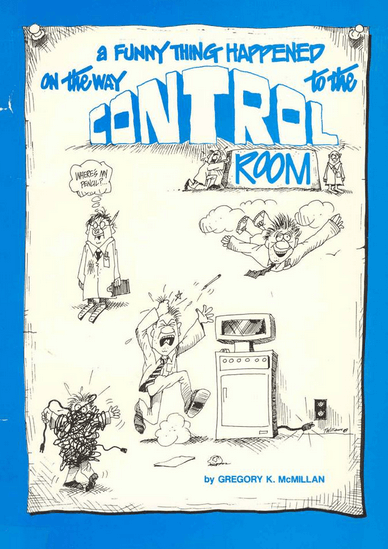 I’ve heard ModelingAndControl.com’s Greg McMillan say this many times, “Without deadtime, I might be out of a job.” I found a reference to this quote on page 31 of his freely available eBook, A Funny Thing Happened On The Way To The Control Room. He is more emphatic in a blog post, Without Dead Time and Disturbances I Would be Out of a Job.
I’ve heard ModelingAndControl.com’s Greg McMillan say this many times, “Without deadtime, I might be out of a job.” I found a reference to this quote on page 31 of his freely available eBook, A Funny Thing Happened On The Way To The Control Room. He is more emphatic in a blog post, Without Dead Time and Disturbances I Would be Out of a Job.
I bring this up because I’m reviewing a chapter, Industrial Applications of PID Control that Greg has written for a book, PID Control in the Third Millennium – Lessons Learned and New Approaches that will be released in the coming months. Greg shares many ideas for how to effectively manage deadtime with capabilities available in advanced PID control.
Deadtime is that delay between when the controller output makes a change and the process begins to change beyond a predefined threshold. If you’re not steeped in process control, imagine turning the steering wheel of your car and having to wait 2 seconds for the wheels to turn (credit to ControlGuru for this analogy). Driving would get a lot tougher wouldn’t it? Controlling a process and having to deal with this deadtime is what makes the job of a control engineer so difficult.
Deadtime is the subject of quite a number of Greg and Terry Blevins’ posts over at ModelingAndControl.com. And in the chapter Greg is finalizing, he notes:
It will be shown that the total PID loop deadtime in industrial processes determines the ultimate limit to loop performance. The total loop deadtime has many sources most of which are variable. The process deadtimes and time constants are rarely constant.
In the Without Dead Time and Disturbances I Would be Out of a Job blog post, Greg lists some sources of deadtime:
- Discrete execution and communication interval
- Analyzer cycle time (e.g. chromatograph)
- Transportation delay (e.g. sample line)
- Mixing delay (e.g. agitator, eductor, and sparger)
- Injection delay (e.g. back filled dip tube)
- Resolution limit (e.g. VSD [variable speed drive], control valve)
- Dead band (e.g. VSD, control valve)
- Instrument time constants in series (e.g. sensor and signal filter lag)
- Process time constants in series (e.g. thermal lags and residence times)
- Lab samples (e.g. sample hold, processing, and analysis time)
Greg sums up ways to deal with this deadtime in a post, Getting Rid of Dead Time – Beam Me Up Scotty:
- First improve the PID controller tuning before even considering dead time compensation. Setting Lambda equal to the maximum dead time (Lambda factor equal to the maximum dead time to time constant ratio) is effective for load disturbances at the process input if there are no extenuating circumstances.
- Add feedforward control whenever it is possible to measure or infer load disturbances at the process input.
- If there is economic justification for further improvement and the dead time can be updated within 25% accuracy for varying operating conditions, trial test and closely monitor a PID with delayed external reset for low dead time to time constant ratios.
- For loops with high dead time to time constant ratios, multiple manipulated variables, interactions, or constraints, consider model predictive control.
The chapter in this book sums up a great deal of process control wisdom that Greg has shared in posts such as these over on the ModelingAndControl.com blog.




